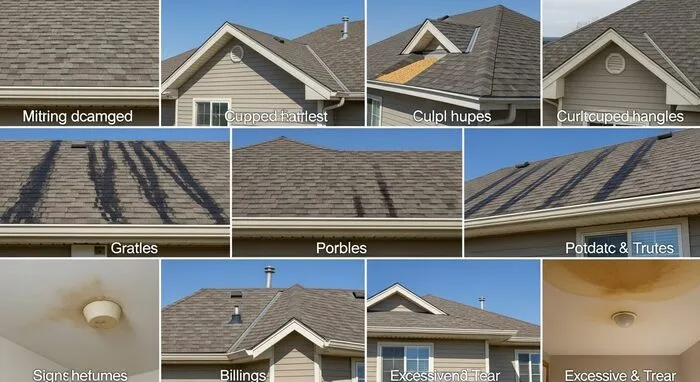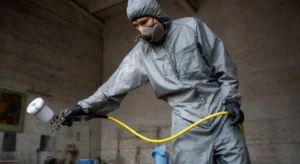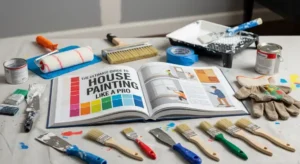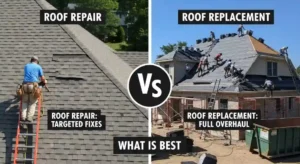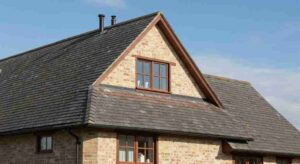Billings’ unpredictable weather can be a devastating drain on your roof. From bitterly cold winters to hailstorms to windy gusts and blistering sun, your roof is exposed to forces that progressively decay it. It takes catching the warning signs of roof damage before they become a problem to prevent paying for repairs and to keep your house from water damage, structural compromise, and insulation failure.
Expert Billings Roofers Ready to Inspect—Book Today!
If you own a home or manage a property in Billings, these are ten signals that your roof needs immediate professional care.
1. Missing, Broken, or Curled Shingles
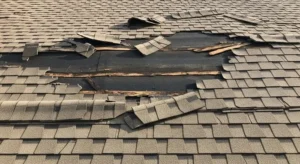
Shingles are the initial line of defense that protects your home from the elements. Your roof’s effectiveness against moisture, ultraviolet light, and wind load decreases as they weaken.
What This Sign Means:
Usually, asphalt, fiberglass, or organic material is used to make shingles. Temperature swings, heavy rain, and years of sun exposure make them difficult. Their strength and flexibility are lost, and cracks appear on the surface. The edges curl up or down. In extreme weather conditions, these shrunken shingles can be blown away completely.
Tangible Signs:
- Tiny spots on the roof where shingles are completely missing
- Solitary shingles with surface cracks or fractures on their face
- Shingles that appear curled or buckled, especially along edges or valleys
When you see such signs or symptoms on your roofing, your home is susceptible to water entry and insulation loss. A professional asphalt shingle roof repair expert can examine the damage and suggest some repair or full replacement according to the extent of the damage.
2. Granules in Gutters and Downspouts
Asphalt shingles’ rough, bumpy texture is speckled with granules that serve cosmetic and protective purposes. Granules cause sun reflectance and a rain, hail, and fire barrier. Shingles will lose their granules sooner as they age.
Why It Matters:
Having a lot of gritty debris in your gutters is not a beauty issue. It’s an indication that your shingles are breaking down on the roof. When those granules wear away, the materials they cover are in danger, and there’s a higher potential for water damage and structural failure.
Look out for these signs:
- Dark, sand-like debris in gutter channels and at downspout bottoms
- Bald or shiny spots visible on the exterior face of shingles
- Color variation or irregular staining on different sections of the roof
Loss of granules is a sure indicator of aging roofs. Roofing professionals can determine if a specific section exhibits excessive wear and if partial or complete replacement is required for weather resistance.
3. Algae, Moss, or Black Streaks on Roof Surfaces
In Billings, shade and wet intervals under trees encourage organic matter to develop on your roof. These may include blue-green algae that produce black staining and moss, which loves to create in wet crevices between shingles.
Understanding the Risk:
Even though algae seem to be a cosmetic issue, where they show up, water is trapped, and the roof surface protection is compromised. Moss is worse. Moss can develop in areas under shingles and gradually loosen shingles from the roof deck, allowing water to penetrate behind them.
What You May See:
- Dark streaks down roof slopes, usually mistaken for dirt
- Green or fuzzy patches of moss, typically on sections of roof not exposed to the sun
- A wet or slippery appearance on roofing shingles or tiles
A professional roofer might employ gentle cleaning techniques to remove algae and moss without reducing the strength of shingles. Preventive action can be taken to keep future growth in check and leave the roof surface clean and efficient.
4. Water Stains on Ceilings or Top Walls
One of the most apparent indicators of a roof problem is water stains in your house. Stains are signs of water entering your home via the roof and dripping onto attic insulation, ceiling insulation, or upper walls.
What This Means:
Even a small crack in your flashing or roof membrane can allow rainwater to run along the framing and drip into living spaces. The leak may have been ongoing for weeks or months before stains show up, leading to hidden damage behind ceilings and walls.
Symptoms You Might Experience:
- Yellow or brown circles on the ceiling drywall
- Discoloration streaks or patches along the top of walls
- Peeling paint, bubbling paper, or the stench of dampness where harm is being done
The leak must be visually repaired to prevent mold, wet insulation, and extensive damage to the building. A licensed roofer will look to determine where the leak is and whether localized repairs or a whole roof replacement are needed.
5. Daylight Peeking Through the Attic
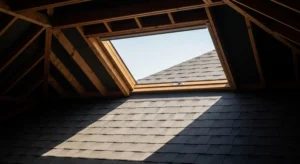
Your attic space can provide beneficial information about the health of your roof. If you can see light filtering through the roof boards or notice strong drafts during windy days, some holes or openings may compromise the building envelope.
Why This Happens:
Roofing material will shift, shrink, or delaminate with temperature and weather pressure changes. Nails will come loose, and flashings will separate, forming gaps that will not close. The gaps are portals of entry for cold air, water, and sometimes insects into the dwelling.
On Attic Inspection, Look For:
- Beams of sunlight appear to be traveling through slats or decking
- Visible air temperature differences from the home’s balance
- Damp insulation, mold spots, or frost on rafters during winter
They are indicators that must never be overlooked. An open attic invites water damage, heat loss, and unwanted pests. A roof inspection will reveal the deck’s condition, underlayment, and whether replacement or repair is necessary.
6. Sagging Roof Deck or Shingles
A level roofline indicates a strong support system for your house. When the deck supporting your roofing system starts sagging or dipping, it clearly shows undetected water damage or a weakened support system.
What This Condition Means:
Sagging roofs are probably caused by prolonged moisture exposure, weakening the plywood or framing beneath the shingles. Water penetrating through the roof system causes it to warp, rot, and completely collapse in very severe cases.
Significant Visual Signs:
- Wavy or uneven appearance on roof ridges or valleys
- Water-retaining depressions on ceilings indoors close to damaged regions
- Cracks on ceilings indoors close to damaged regions
Sagging is always structural. It indicates extreme internal weakness that must be dealt with immediately. A full structural examination and professional roof treatment must be performed to prevent further damage or potential harm to occupants.
7. Rusted or Damaged Flashing
Flashing is part of every roof. Tiny pieces of metal are installed around skylights, vents, chimneys, and intersection points to channel water away from weak spots. When flashing is loose, cracked, or rusty, water can seep into even a new roof.
Where shingles meet extensive roof areas, flashing prevents leaks from being generated at transitions and penetrations. Rusty or loose flashing is a frequent source of hidden leaks, especially following ice storms or dams.
What to Look For:
- Rust stains or corrosion at roof penetrations
- Loosely fitted flashing that moves with slight pressure
- Stains or soft spots on interior walls beneath chimneys or skylights
Skilled roofing technicians can reseal or replace damaged flashing with new weatherproofing materials that enhance long-term roof performance and energy efficiency.
8. Gutters with Debris or Overflowing Water
Gutters are essential for diverting water from your home’s base and borders. They retain water that seeps into the eaves and underlayment when leaves, pine needles, or other debris obstruct them.
Why This Should Be of Concern to You:
Excess water at the roofline speeds up wear and tear and encourages mold and algae growth. Blocked gutters also cause ice damming during winter, causing water to press behind shingles.
Symptoms You Might Experience:
- Overflowing gutters in even light rain
- Vegetation inside the gutter trough
- Watermarks or rot on fascia boards and under-siding behind gutters
You will need a maintenance schedule, professional gutter cleaning, and inspections to keep your property and roof intact.
9. Sudden Spike in Monthly Utility Bills
If your heating or cooling bill unexpectedly increases without changing usage, your roof could be the culprit. A failing roof loses conditioned air and lets outside air in, compromising your home’s thermal barrier.
How Your Roof Impacts Energy Performance:
A compromised roof system loses its insulating ability. Leaks, gaps, and holes cause air to seep out, making your heating and cooling system work harder to keep your home comfortable. That means higher energy bills and decreased energy efficiency.
Watch Out for These Signs:
- Winter cold drafts or summer heat overload
- Room temperatures that are out of balance
- Visible spike in energy bills without extra usage
Replacing or renovating your roof using new energy-saving materials can reduce air loss and warm the building, especially with better ventilation and insulation systems.
10. Roof Age Over Twenty Years
Though good roofing materials will remain durable for several decades, no roof lasts forever. If your roof is over two decades old, especially if it has never been replaced, it is likely at the end of its working life.
Why Age Matters:
Even if your roof looks good together and sounds fine from the outside, there might be hidden problems like stiff, brittle underlayment, loose screws, and granule loss that can affect the roof’s ability to shield. Older roofs will also be energy-wasting and leaky.
What to Inspect:
- Inspect the history of the previous installation or complete roof replacement
- Extensive shingle weathering and mottled discoloration
- Creaking noises during storms or temperature changes
Scheduling the roof replacement before a total breakdown can save you from making emergency repairs and keep your home secure all year round in Billings.
What to Do Next
All these signs indicate that your roof is no longer covering your house. Neglecting these signs will lead to more water damage, interior mold, damaged insulation, and repair costs.
If shingles have fallen off, roofing leaks, or sagging structures cause you worry, rest assured our veteran team of Billings roofers is at hand to give rapid, expert resolution. Our strength lies in our residential and commercial roofing replacement and repairs, and we offer multiple types of materials ranging from asphalt shingles, tiles, metals, TPO membranes, and slates. Thorough inspection services, reliable damage assessments, and individualized repair or replacement plans suitable to your requirements are what we provide in return.
Let minor issues become major repairs. Let us help you protect your home with greater care and proven solutions that fight the unique Billings weather patterns.
FAQs:
How often should I have a roof inspection in this region?
At least annually, ideally in spring or fall, and right after large storms, to catch hidden damage.
Can we wait until the summer to fix minor leaks?
Leaky roofs can become covered with dirt and develop, causing massive water damage if not fixed. Fixing leaks early prevents structural weakening.
Do area roofers assist with insurance claims?
Yes. Most Billings roofing companies offer storm damage inspections, photo documentation, and communication with your insurance agent.
